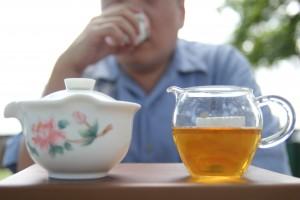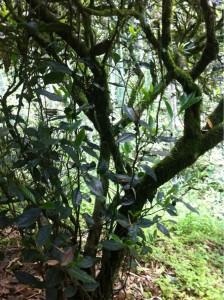Let’s get this out of the way, translation is difficult, especially from an eastern, character based language (Chinese) to a western, alphabet based one (English). Having written more than 150,000 words with source material predominantly researched in Chinese, I think I have a better handle on it now than when I first started out.
Yet some of the most important phrases are untranslatable. I am not referring to geographical locations or names which would be meaningless if translated anyway- care for some Mt Yellow Hairy Peaks (Huangshan Maofeng) or the machine-translation of Peaceful Monkey King (Taiping Houkui).
What are referred here are the descriptors that are fundamental in accessing the quality of the tea.
Let’s take a look at some of them:
“Hui gan” (回甘)
Probably the closest translation is ‘recurring sweetness’ but it doesn’t quite encapsulate the idea.
Tea, in its raw form, is bitter. Most processed teas try to reduce the bitterness but individuals who are highly sensitive to taste (not as much a blessing as one would think) would always detect some hint of bitterness in tea.
Yet part of the uniqueness of tea- at least good tea- is the sweetness that wells up in the throat to replace the bitterness, leaving literally a sweet taste in the mouth and the throat.
This phenomenon also illustrates the Chinese saying: 苦尽甘来- the sweetness comes after the bitterness has passed. A word of encouragement and comfort in distressing times, small wonder ‘hui gan’ is such a soothing feeling as well.
“Yun” (韵)

This is commonly used in describing 3 main types of teas- Wuyi teas which have “yan yun” (岩韵) , Tieguanyin which has “yin yun” (音韵) and Dancong which has “shan yun” (山韵).
Take “yan yun” for example. It is virtually impossible to describe- akin to explaining to a blind man the difference between green and blue. It could be the sticky texture and full body juxtaposed against a robust smell of burnt rocks. But that doesn’t quite do it justice. The simplest way is to try a Wuyi Yancha that was grown in the core producing area versus one that is not.
Of course that is no simplistic task, lots of “Dahongpao” out there in the market that are not even grown in the core producing area, let alone of the authentic cultivar but I digress.
Arguably though, “yun” is possibly one of the most important factors in the allure of oolong tea.
In any official ‘score card’ for grading Tieguanyin for example, varying degrees of ‘yin yun’ are among the factors use to determine the grade of tea.
*What? Did you think that grading is based on appearance alone?*
Unfortunately this is one of those things that can only be learned from experience and by drinking good tea and drinking it repeatedly. Touch and go doesn’t lend well to learning, you could drink thousands of teas once and know little about tea.
“Cha qi” (茶气)
Chaqi is literally the “measure or bearing of the tea”. This most frequently pops up in conversation when we are discussing pu-er, especially sheng pu.
It is a sensation that wells up in your chest to your head, a feeling of headiness, like a gush of energy. It is a sensation that leaves your face literally feeling flushed, kind of a ‘high’.
Some have attributed this effect to caffeine, while ignoring the fact that generally speaking Silver Needles would have among the highest caffeine content but absolutely no ‘cha qi’ to speak of while aged Pu-er have lesser caffeine but strongest chaqi.

Another possibility is that tea leaves produced from the same tree- or cloned trees- will have a stronger ‘mountain measure’ (山头气). The cumulative effect of using leaves from the same tree will produce this effect.
Disclaimer: Of course this inference is based on common ground of these teas and not any scientific research- yeah I don’t have a lab behind me or a budget comparable to the GDP of a third world country. As with anything I have written thus far, I would happily stand corrected if proven wrong, after all, tea is a never-ending learning journey.
Tea tasting as I repeatedly stressed, is not about picking up obscure notes. It is more useful to talk about the ‘hui gan’, ‘yun’ and ‘chaqi’ if you are assessing the quality of tea as opposed to “lilac notes hiding behind shades of hibiscus lined with a hint of lemongrass”.
I invite you to experience this with me. After all there is much in tea that goes beyond the limitations of words.
See more articles on Tea Appreciation here
